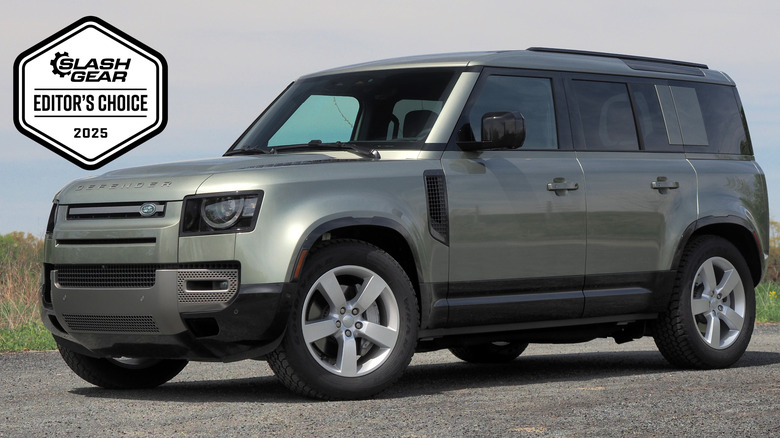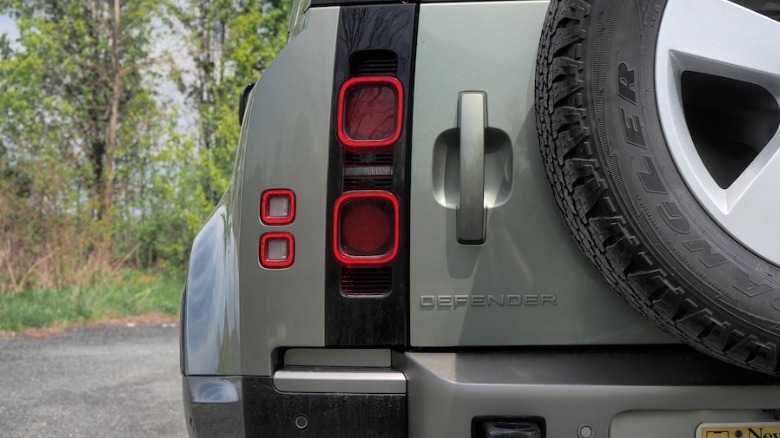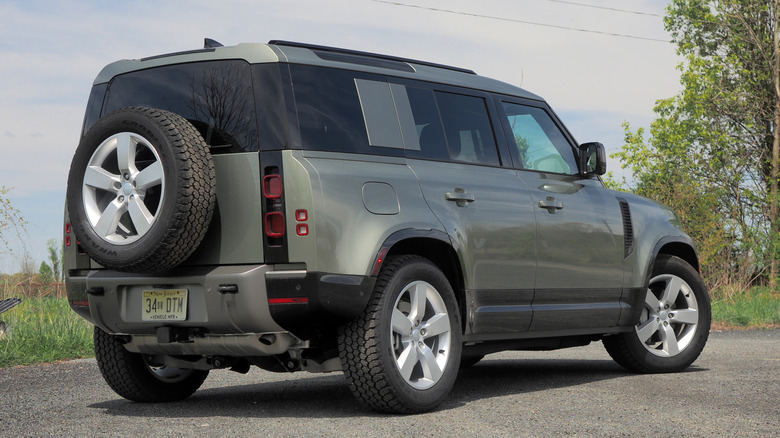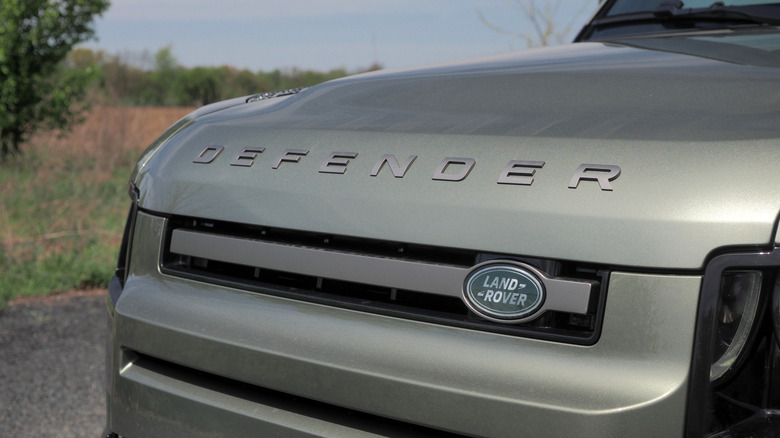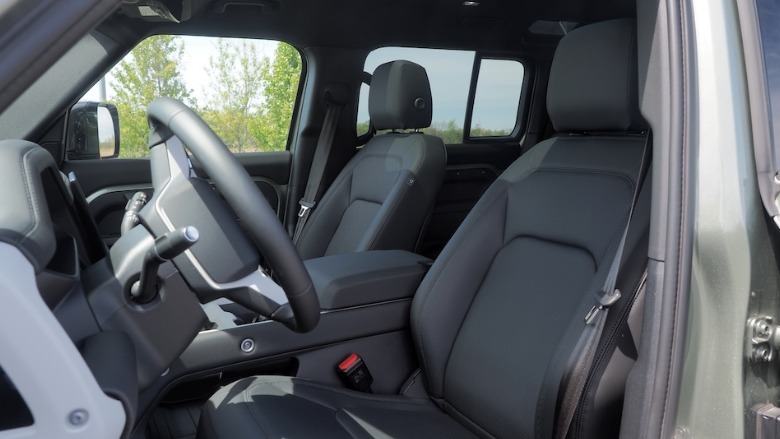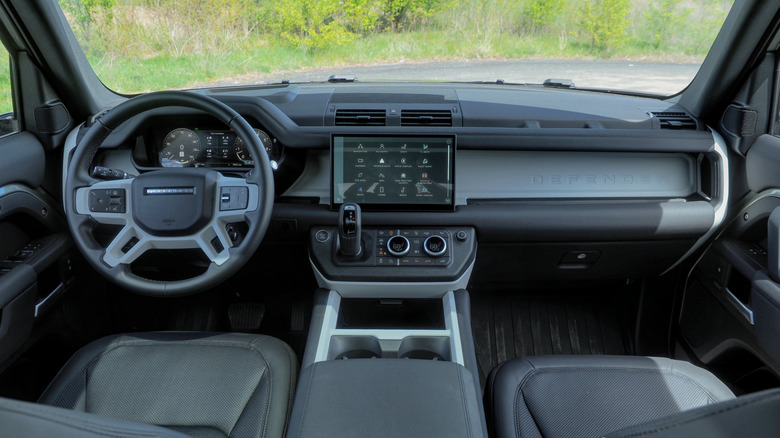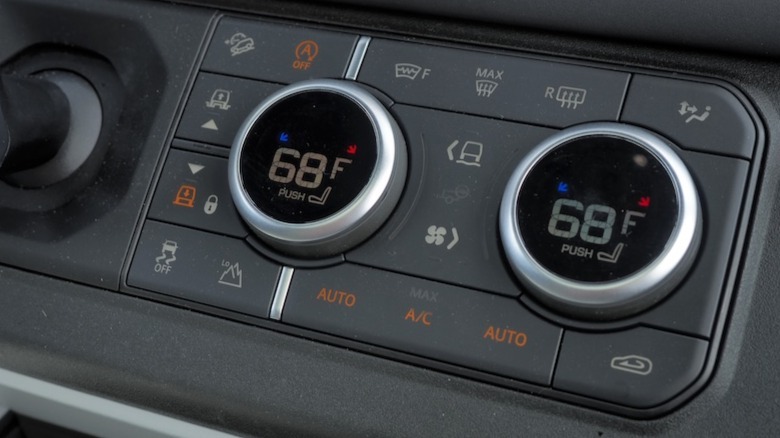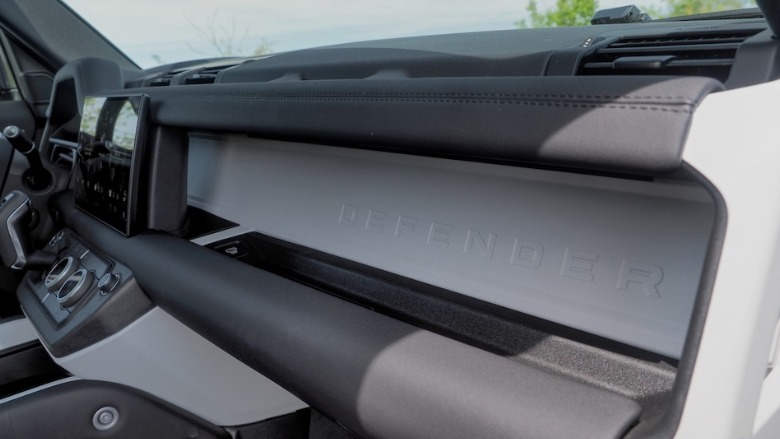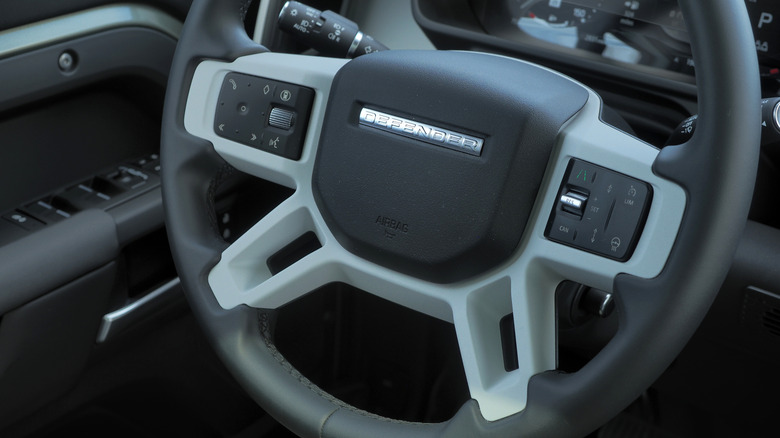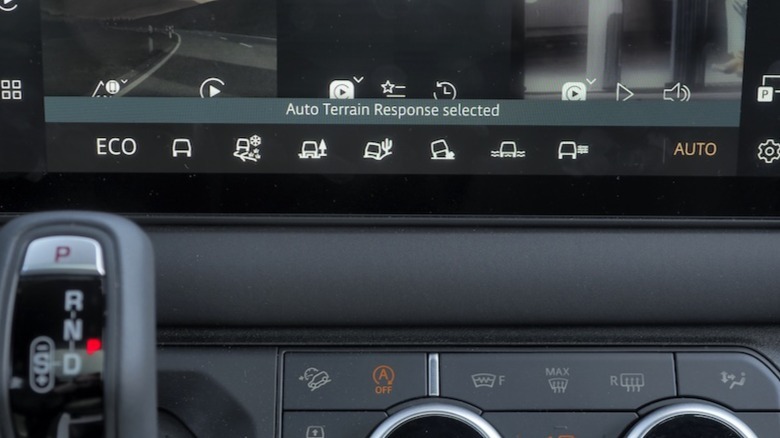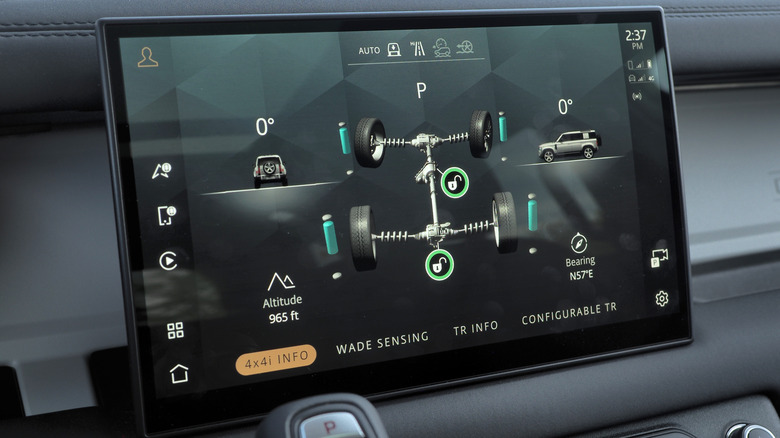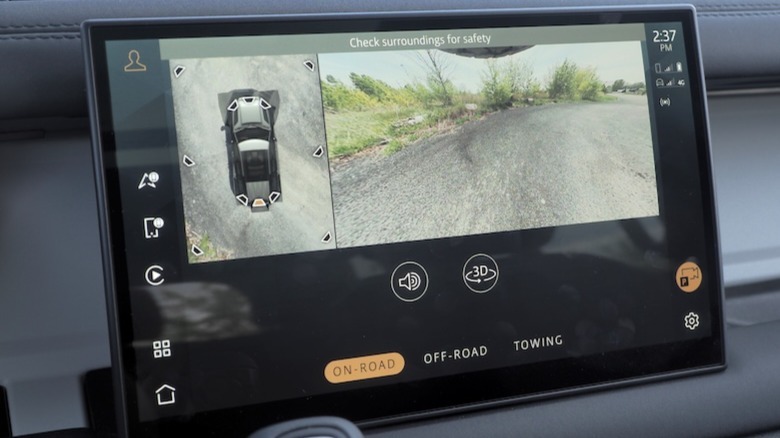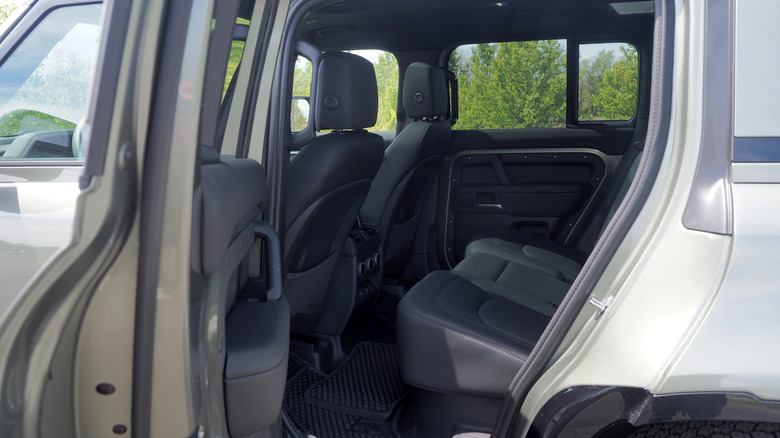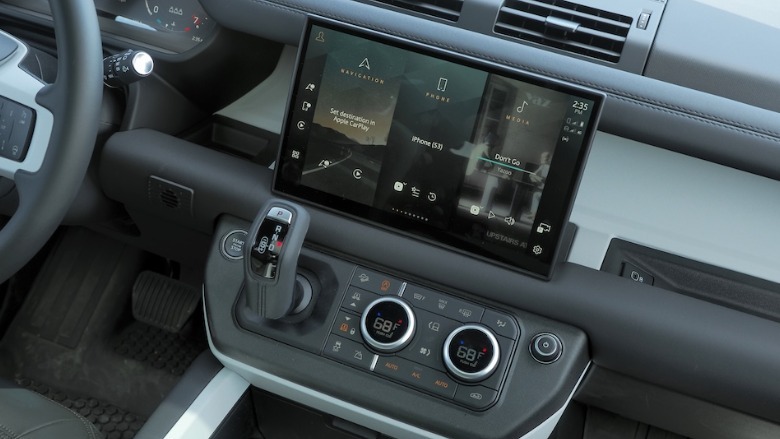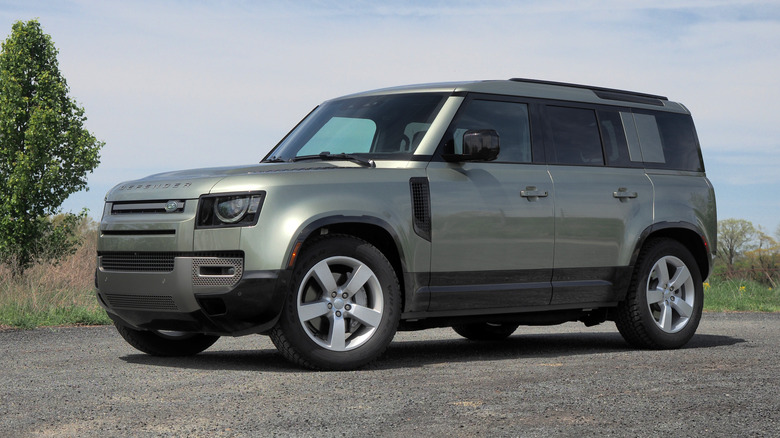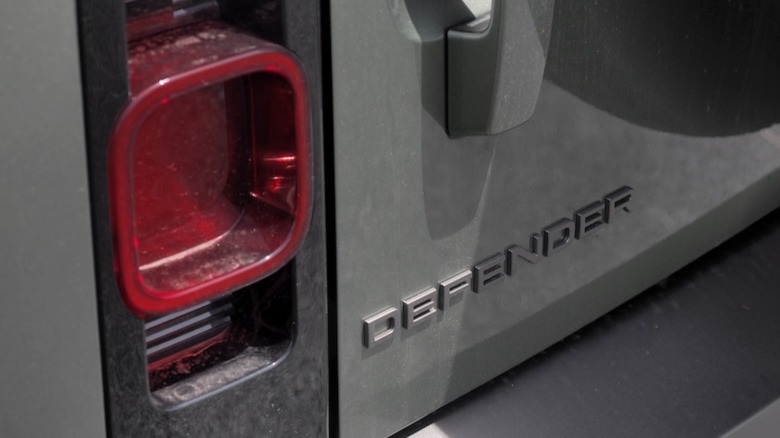2025 Land Rover Defender 110 Review: Anything Less Would Be A Compromise
- Luxury and off-road talent all-in-one SUV
- Six-cylinder engine is plenty powerful enough
- Rugged interior is practical and straightforward
- Hardly inexpensive
- No PHEV option
Elevated driving positions, rugged styling, and lots of flexible space: sometimes, it feels like American drivers buy SUVs for every possible reason bar actually going off-road. That could, on the face of it, present a problem for something like the 2025 Land Rover Defender 110, an SUV that — for all its niceties — refuses to compromise when it comes to ability regardless of terrain.
Yet, despite a budget that must pay for talents only a small percentage of owners are likely to experience, it's fair to say that the new Defender has been a huge success. It was the top selling model in Jaguar Land Rover's line-up worldwide last year, and is expanding for 2025 with a new Defender Octa version that pushes power (and price) even further skyward.
I suspect part of the charm is in how well the Defender straddles Land Rover's dual worlds of luxury and workhorse SUV. It's not as plush as a Range Rover, no, but I'd feel much happier taking the Defender off-road — even if the automaker's most lavish model is surprisingly adept with the right wheels. Hose the mud off at the end of the day, though, and the Defender could also hold its own at the fanciest of valet stands.
Three bodies, and cylinders from four to eight
Land Rover has three body styles for the Defender series, this 110 version (from $60,800 plus $1,625 destination) being the most traditional. The Defender 90 (from $56,900 plus destination) is shorter, with two-doors, while the Defender 130 (from $69,700 plus destination) has three rows of seats and a stretched wheelbase. Personally, I love the aesthetic of the two-door, but I'll concede that the Defender 110 is probably more practical for most families.
Defender 90 and 110 models start out with a 2.0-liter turbocharged four-cylinder gas engine with 296 horsepower and 295 lb-ft of torque. A 3.0-liter six-cylinder engine is offered on higher trims, but standard on all versions of the larger Defender 130.
Those feeling particularly profligate can opt for Land Rover's 5.0-liter supercharged V8 engine, with its 518 horsepower and 461 lb-ft of torque. It's enough to trim the 0-60 mph run to 4.9 seconds in the Defender 90 V8 (or 5.1 seconds in the 110 version). Finally, the new Defender Octa has a 4.4-liter turbocharged V8 that, though slightly smaller, actually has markedly more power: 626 hp and 553 lb-ft, good for a 3.8 second 0-60 dash.
Does anybody need a Defender that goes so fast? Probably not, but it sure sounds like fun.
Designed to age gracefully
Regardless of door count, there's a visual heft to the Defender which it shares with its Range Rover cousin. A chunky solidity, classic and yet modern with it. Land Rover eschews the overly-detailed wheels commonplace in the SUV segment right now, in favor of simplistic ones that — despite being 20-inches here — still manage to offer plentiful sidewall. That generally pays dividends for road comfort, but also much reduces the likelihood of your expensive alloys getting dinged as soon as you venture into rougher terrain.
The side-hinged rear door is heavy to open, but with the $1,800 Air Suspension Pack you get buttons in the cargo area to raise and lower it for easier access. You can actually do it remotely, from the key fob, by pressing and holding the headlights button and then the tailgate button to lower the Defender, or the unlock button to raise it (the hazard blinkers do need to be on, first, mind).
In the standard five seat configuration, there's 34 cu-ft of trunk space with the rear seats up, expanding to 78.8 cu-ft with them folded down (the 5+2 version is almost 10 cu-ft lower behind the first row). Sturdy rubber interior mats come as standard on the X-Dynamic SE trim.
Decent tech in a rugged cabin
Unlike the minimalism of the Range Rover and Velar, the Defender's cabin isn't afraid of buttons and knobs. Up top, to go with the digital driver's display, there's an 11.4-inch touchscreen running Land Rover's straightforward Pivi Pro infotainment, with wireless Apple CarPlay and Android Auto. Underneath is a panel of physical controls, with dedicated keys for adjusting ride height, traction control, and the standard dual-zone HVAC basics, plus a pair of multi-function dials. These variously adjust temperature, the heated/cooled seats if fitted, and scroll through the different drive and off-road modes.
Someone at Land Rover's design studio is clearly worried passengers will flail and fail to find a grab handle in an off-road emergency, since almost everywhere you look inside there are places to grip. The trough ahead of the front passenger — rubber-lined, so objects don't slide, and with a USB-C port for convenient charging — is one of a number of thoughtful storage spots. There's also a reasonably deep bin between the plush front seats.
Those in the rear get more USB-C ports along with dedicated HVAC controls if the $400 three-zone upgrade is fitted. A $500 option adds heating to the rear 40:20:40 split bench. Land Rover is at least upfront that its $2,290 three-row option doesn't guarantee equal seating for all: described as "5+2" it adds a small pair of kid-scale seats in the trunk. The longer Defender 130 has a more welcoming third-row.
Not spritely, but not slow either
On the road, this Defender 110 X-Dynamic SE with its 3.0-liter inline-six mild-hybrid gas engine hits an SUV sweet spot. No, it's not toting outsized power numbers — 395 horsepower and 406 lb-ft of torque are routed through the eight-speed automatic transmission to the standard all-wheel drive and twin-speed transfer box — but it never feels slow or ponderous. I landed right on the official 19 mpg combined fuel economy figure, too.
The various different drive modes err on the side of off-road utility, but there are Comfort, Eco, and Sport settings, plus an S mode for the transmission. The latter allows you to shift gears yourself, pushing the stick back and forth, but there are no steering wheel paddles. Frankly, I felt no need to override, with the Defender's combination of electrification, plentiful torque, and a gearbox happy to slur down a ratio or two always ensuring there was grunt to spare.
This isn't a nimble, or especially agile SUV: its heft is clear. But it's smooth and refined, the suspension erring on the compliant side even at the adaptive dynamics' firmest settings, and lopes through highway miles with aplomb. Stately seems the right word.
Off-road ready (even if you're not)
Point the Defender into the mud, meanwhile, and it's a stately goat. Terrain Response, Hill Descent Control, and various off-road modes are standard, but the $1,735 Off-Road Pack adds an electronic active differential, wade sensing, and all-terrain tires. Then there's the $1,850 Towing Pack, which as well as a tow hitch receiver and Advanced Tow Assist, has All Terrain Progress Control, the more fulsome modes of the Terrain Response 2 system, and Configurable Terrain Response.
That's a lot of words (some of them weirdly overlapping) to basically say that the Defender can go most places. There is, at least, a set-it-and-forget-it Auto Terrain Response option that leaves the computers to figure it all out themselves. Or, the central touchscreen can show a graphical representation of the various differential locks and such, making adjusting the settings a tap-and-go affair.
I suspect it's the sheer scale of the SUV that'll be the limiting factor most of the time (though the 3D surround camera and 360-degree parking sensors should help there). My own beyond-road venturing was fairly low-key, but the Land Rover shrugged off mud and gravel without ever feeling less then sure-footed.
The big Land Rover reliability question
Get into a discussion about the Defender — or, indeed, any Land Rover product — and the topic of dependability inevitably comes up. It's fair to say that the automaker's SUVs are notorious for problematic ownership; it's also fair to say that the reputation isn't entirely undeserved. Consumer Reports is pessimistic about the 2025 Defender's likely reliability; J.D. Power's crowdsourced Quality & Reliability score of 79/100 is more upbeat, but still only ranked Average overall.
Land Rover's retort is a four year/50,000 mile limited warranty with 24 hour roadside assistance, plus a six year/unlimited mile corrosion warranty. Mercedes offers the same limited warranty, as does Lexus, though neither has the same perceived reliability issues that the Defender does. Were it my call, I'd probably throw another year on the Defender's warranty as a mark of confidence, but Land Rover's board never got around to asking for my advice.
Perhaps the reason my phone hasn't been ringing off the hook is that Land Rover is pretty confident with the appeal of the 2025 Defender package already, and I can't much blame it. Though big SUVs aren't exactly a rarity, finding one that occupies the middle ground between on-road manners, off-road talent, and a healthy serving of prestige is a trickier quest.
2025 Land Rover Defender 110 Verdict
A healthy options sheet takes this $72,100 example to $84,358 including destination, pitting the Defender against luxe luminaries such as the BMW X5 and Mercedes GLE SUV, and nipping at the heels of Porsche's more expensive Cayenne. On road, all three of those rivals probably have the dynamic edge, but their lead runs out when the paving does. Then you're in Wrangler territory, but the capable Jeep can't compete in creature comforts; a new Lexus GX might get closer, though falls short of the Defender in both economy and — arguably — renown.
As with the GX, being rational about just how much you really need the off-road capacity is key. $84k, after all, brings you into Range Rover Sport territory, with far more on-road refinement (though you'd need to spend about $11k more for the excellent Range Rover Sport plug-in hybrid). The smaller Velar is undoubtedly cheaper, but also isn't quite so compelling.
With the acknowledgment that taste is subjective, as with the full-sized Range Rover, I find there's something unquantifiable yet inescapable about the Defender's allure. It not only occupies that Venn overlap between luxury, reputation, and capability, but does so with personality that makes it all too easy to overlook things like reliability specters and a premium price tag. While it's far more SUV than I — or most drivers — really need, knowing that does nothing to dampen its appeal.
